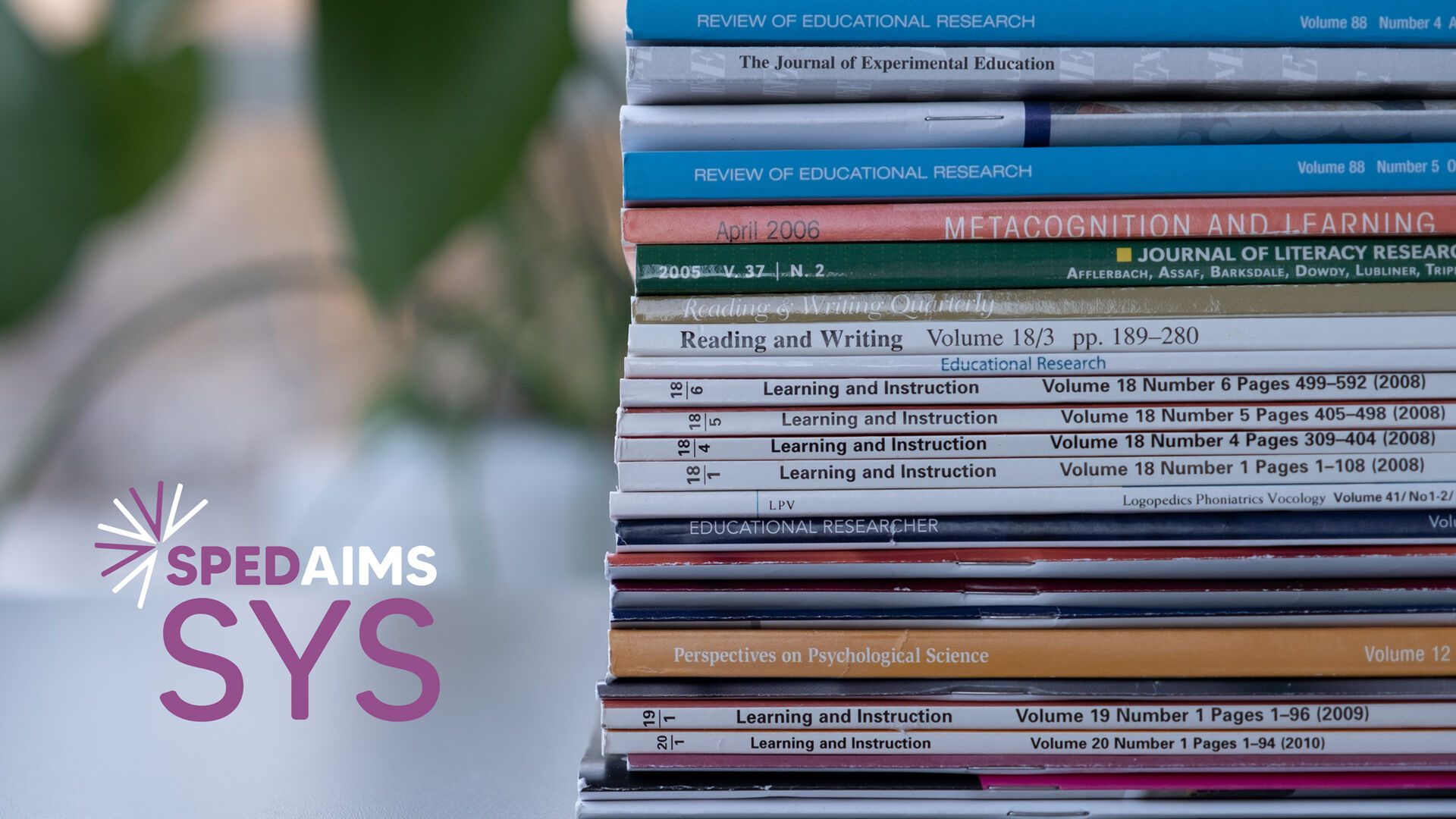In the research project SpedAims SYS, we conduct systematic reviews of studies that have examined the validity and effectiveness of various screening methods, progress monitoring, and interventions within the framework commonly referred to as a "response to intervention" model. This model, in the context of special needs education, focuses on how the child responds to interventions.

Facts about SpedAims SYS
Investigating
the strengths and weaknesses of the special needs education support system that focuses on how the child responds to interventions, also referred to as the "response to intervention" system.
Funded
by The Research Council of Norway and all the partners.
We need more knowledge
The "Response to Intervention" (RTI) model is a three-tier system designed to replace the traditional support system for children with special needs. In the traditional model, a child is referred to the Educational Psychology Service (EPS) when concerns arise at school. The EPS then conducts an assessment to determine if the child requires special education or if interventions within the regular school setting are sufficient. The "Response to Intervention" model flips this approach: all students receive universal education in regular classrooms (Tier 1). Subsequently, the school performs an initial screening to identify those in need of additional support, this is usually around 20% of students (Tier 2). Interventions such as small group support are then implemented, and those who do not respond to these interventions are referred to the EPS for a more comprehensive assessment. Usually around 5% of the students then receive Tier 3 intervention.
The rationale behind this model is that effective assessment procedures can help schools better identify children with difficulties and provide them with the necessary attention and support. However, it remains unclear whether assessment alone leads to improved academic performance because schools provide more comprehensive support to those who are struggling. This is the aspect we aim to investigate.
While there are some systematic reviews and meta-analyses of the RTI model and the three-tier system in general, there is a lack of comprehensive systematic reviews that examine the overall validity of screening and progress monitoring assessments within the RTI framework.
In SpedAims SYS, we ask:
How valid and effective are teacher screening and progress monitoring assessments within the three-tier model in early childhood education and care (ECEC), or first or second grade in primary school?
Specifically, we will examine:
- What type of screening and progress monitoring assessments in language, literacy, and mathematics domains have been used for placing children in the three-tier system in ECEC, or first or second grade in primary school?
- To what extent can these tools predict the students’ academic achievement outcomes?
- What proportion of students are classified into each of the tiers by these tools, and how accurately can they predict difficulties?
- Does the screening itself lead to improved academic achievement outcomes because schools provide better support to struggling students?

SpedAims - Centre for Research on Special Needs Education and Inclusive Practice is a collaboration between special educational research environments at the University of Oslo, the University of Stavanger, the University of Bergen, the University of Agder and Nord University.
Contact persons in SpedAims SYS

Serap Keles
Professor at The Knowledge Centre for Education, University of Stavanger.

Dieuwer Ten Braak
Associate Professor at The Norwegian Centre for Learning Environment and Behavioral Research in Education, University of Stavanger.

Åste Marie Mjelve Hagen
Associate Professor at The Department of Special Needs Education, University of Oslo

Monica Melby Lervåg
Professor of Special Needs Education at The Department of Special Needs Education, University of Oslo.